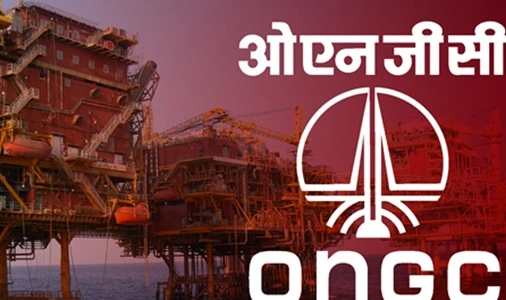The Ministry of Petroleum and Natural Gas, Government of India, is the owner of the Oil and Natural Gas Corporation Limited (ONGC), a central public sector enterprise. The company’s main office is in New Delhi. On August 14, 1956, the Indian government established ONGC. It is the nation’s biggest government-owned producer and explorer of gas and oil.
ONGC is India’s biggest producer of natural gas and crude oil, accounting for around 71% of the country’s total output. Additionally, it is a significant producer of goods like liquefied petroleum gas (LPG), naphtha, superior kerosene oil (SKO), and C2/C3 (diatomic carbon/tricarbon).
Throughout India’s main oil and gas-producing regions, the corporation maintains substantial onshore and offshore production facilities, subsea and land pipelines, gas processing, drilling and work-over rigs, storage facilities, and other infrastructure.
ONGC Company Details
| Company Name | Oil and Natural Gas Corporation (ONGC) |
| Origin Country | India |
| Founded | 1956 |
| Founder | Government of India |
| Chairman & Managing Director | Shashi Shanker |
| Headquarters | New Delhi, India |
| Industry | Oil and Gas Exploration, Production |
| Key Operations | Exploration, Production, Refining, Marketing |
| Number of Employees | Over 30,000 (as of last update) |
| Official Website | www.ongcindia.com |
Business and Revenue Model
Client Segments: Target Markets for ONGC
ONGC’s business is driven by the wide range of customer sectors it serves. The following are the main customer segments:
a. Refineries: Bharat Petroleum Corporation, Indian Oil Corporation, and Hindustan Petroleum Corporation are a few of the country’s largest refineries that purchase crude oil from ONGC.
b. Power and Fertilizer sectors: The power and fertilizer sectors depend on ONGC’s natural gas production as a vital fuel to keep their operations running smoothly.
c. Petrochemical Industries: Manufacturing different chemicals and plastics from the company’s natural gas plus crude oil leftovers, the petrochemical industries represent another important market for ONGC.
d. Residential and Commercial customers: ONGC also supplies natural gas to commercial and residential customers through its joint ventures as well as subsidiaries, bolstering the nation’s energy security and satisfying the expanding demand for clean energy.
Value Proposition: ONGC’s Primary Products and Services
Offering its clients a dependable, varied, and reasonably priced supply of hydrocarbon products is at the heart of ONGC’s value proposition.
The following succinctly describes the company’s primary offerings:
Research and Development
- ONGC has a wide range of assets in its portfolio, including foreign projects and both onshore and offshore fields.
- Economy of Cost
- Environmental responsibility and sustainability
Channels: The Value That ONGC Provides
ONGC uses a variety of channels to promote its value proposition, including:
- Vast network: ONGC possesses a vast pipeline network which facilitates the transportation of natural gas and crude oil from production sites to refineries as well as other end users. Hydrocarbon supplies are guaranteed to be reliable and safe thanks to these pipelines.
- Joint ventures and subsidiaries: ONGC distributes and markets its goods to consumers through several joint ventures and subsidiaries.
- Strategic Partnerships: By collaborating with both domestic and foreign businesses, ONGC can exchange resources, technology, and expertise, which improves its capacity for exploration and production.
Developing Long-Term Partnerships with Customers
Long-term partnerships, dependability, and trust are the cornerstones of ONGC’s customer relationships. Strong partnerships have been forged between the company and its customers, which include prominent refineries and industries in India, through its emphasis on sustainable development, cost effectiveness, and continuous supply.
Revenue Streams: ONGC’s Methods of Revenue Generation
ONGC’s main sources of income are as follows:
- Crude Oil Sales: A sizeable amount of ONGC’s income comes from selling crude oil to refineries.
- Natural Gas Sales: ONGC makes money by selling natural gas to a range of businesses, such as fertilizer, petrochemicals, and power.
- Sale of Byproducts: The corporation also makes money from the sale of byproducts that are created during the refining process, like liquefied petroleum gas (LPG), naphtha, and other petrochemicals.
The following essential resources power ONGC’s business model:
- Gas and Oil Reserves
- Production and Exploration Skills
- Facilities
- Property of Intellectual Works
- Powerful Brand and Image
ONGC participates in several significant alliances to support its business model, such as:
- Technical and Knowledge Collaborations
- Partnerships and Joint Ventures
- Authorities in Government and Regulation
Conclusion
As the biggest supplier of gas and oil in India, ONGC’s business model demonstrates the several elements that go into making the company successful. In order to meet its objective of improving India’s energy security, ONGC has been able to sustain a competitive edge in the market because to its excellent value offer, varied customer segments, strategic collaborations, and effective operations. Entrepreneurs can get important insights into the operations of a top energy company and apply these lessons to their own endeavors by comprehending ONGC’s business model.















